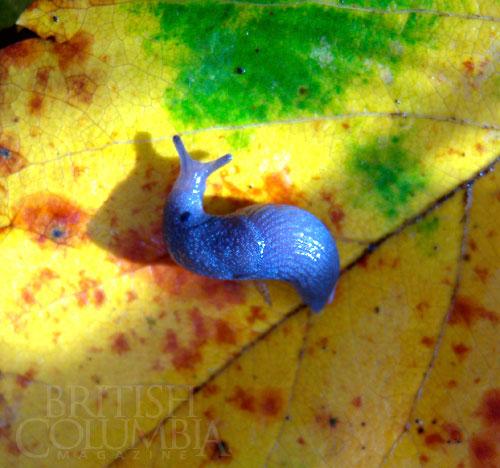
There are four slugs in the province that can drop their tails when faced with a predator. The blue-grey taildropper is the most rare.
Only discovered on Vancouver Island in 2002, the blue-grey taildropper slug is as mysterious as it is beautiful. Hikers fortunate enough to glimpse the endangered slug might mistake it for a lost gemstone. Its colour ranges from pale seawater grey to striking topaz blue. Prophysaon coeruleum is also notable for dropping its tail when grabbed by a predator. The slug is less than three centimetres long, has tentacles, a mantle covering almost half its body, and a slit-like breathing pore.
The rare taildropper feeds on mycorrhizal fungi, which grow on roots and help trees and plants capture nutrients. Biologists also believe the slug spreads beneficial spores through its droppings. Recorded sightings suggest it favours moist forests, particularly endangered Garry Oak meadows and older Douglas-fir forests with arbutus trees.
Kristiina Ovaska, a biologist with the Habitat Acquisition Trust (HAT), was astonished by how little is known about the province’s native slugs. “People tend to focus on the bigger things,” she says. “Here you have to dig in the forest to find many of these species.”
The slug’s Canadian range is limited to southern Vancouver Island, and its numbers are unknown. Anyone who thinks they’ve spotted a blue-grey taildropper is urged to send photos to HAT for identification (hatmail@hat.bc.ca). An identification guide is available online at hat.bc.ca.

